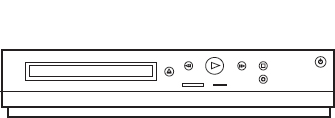Videotape records more than pictures
Other Tracks and Lockup (1)
Sound and Control Tracks
So far only the video information recorded on tape has been discussed, but there is a lot of other information needed on the tape. Sound, for example, also has to be recorded. All of the nonvideo information is recorded using stationary heads much like the heads used in standard audiotape recorders. The number, type, and placement of these other tracks will vary with the specific format of the machine being used.
One of the most important of these other tracks, and one that is common to all formats, is the control track. During the recording process, the vertical sync pulses are recorded on the control track. The control track thus helps stabilize the tape's playback speed.You know that the vertical sync pulses are laid down at a rate of 60 pulses a second (one for each field). The regularity of these pulses makes the control track important for other reasons that will be discussed next.
VTR Lockup
The more precise we can make the VTR's playback speed, the more accurate the playback will be to the recording. When the machine gets up to full speed and everything is as stable as it is going to get, we say the machine is “locked up.” There are several degrees of lockup, and each additional step adds a little more stability
Capstan Lock
The first degree of lockup is called capstan lock, suitable mainly for home videotape recorders. Capstan lock is not a very stable state. The machine essentially relies on the stability of the power source for a constant base. If the power coming out of the wall varies, so does your tape speed because the speed control circuitry is very simple.
Helical videotape.
Capstan lock machines have no special speed control circuitry.


